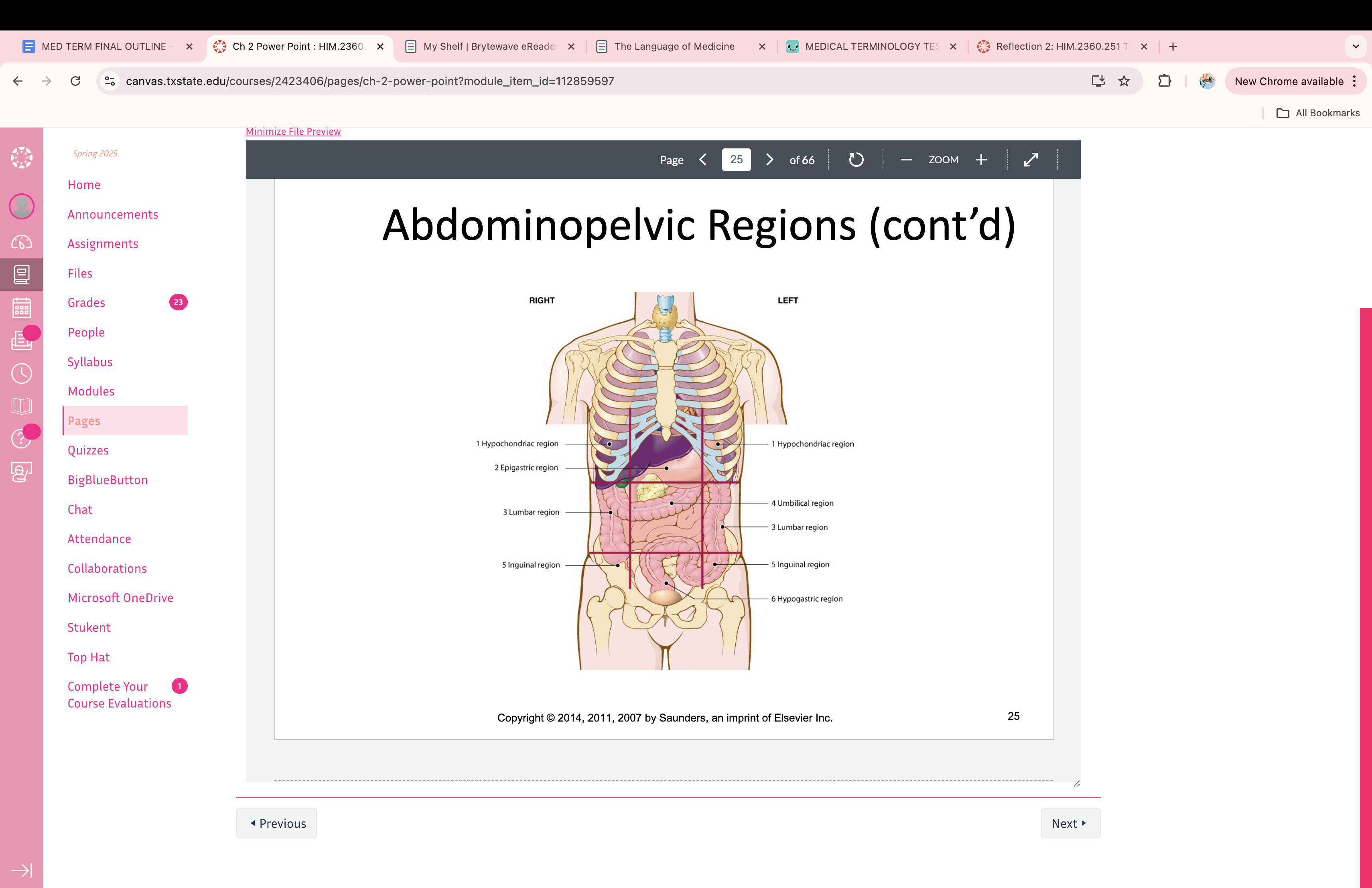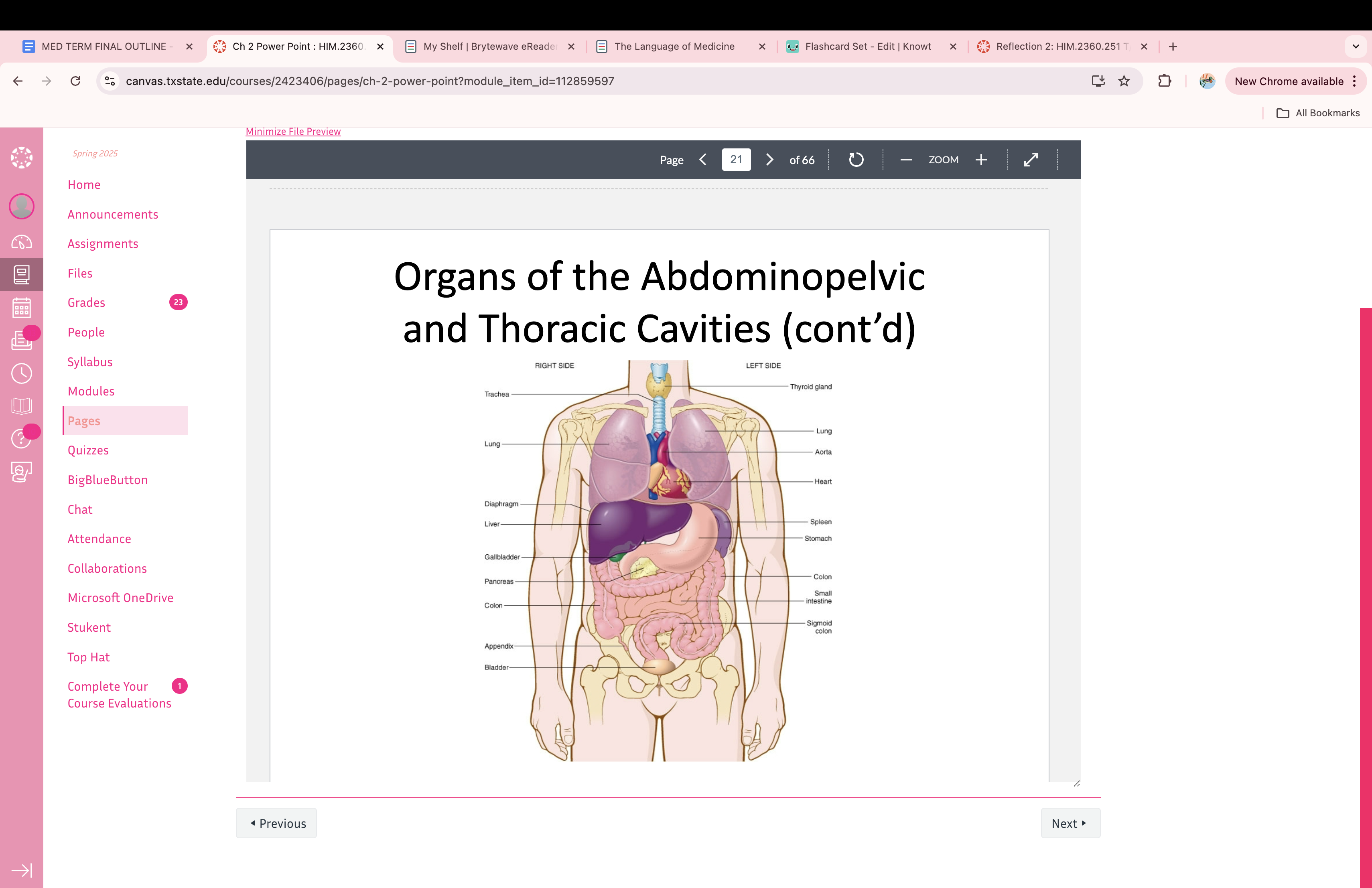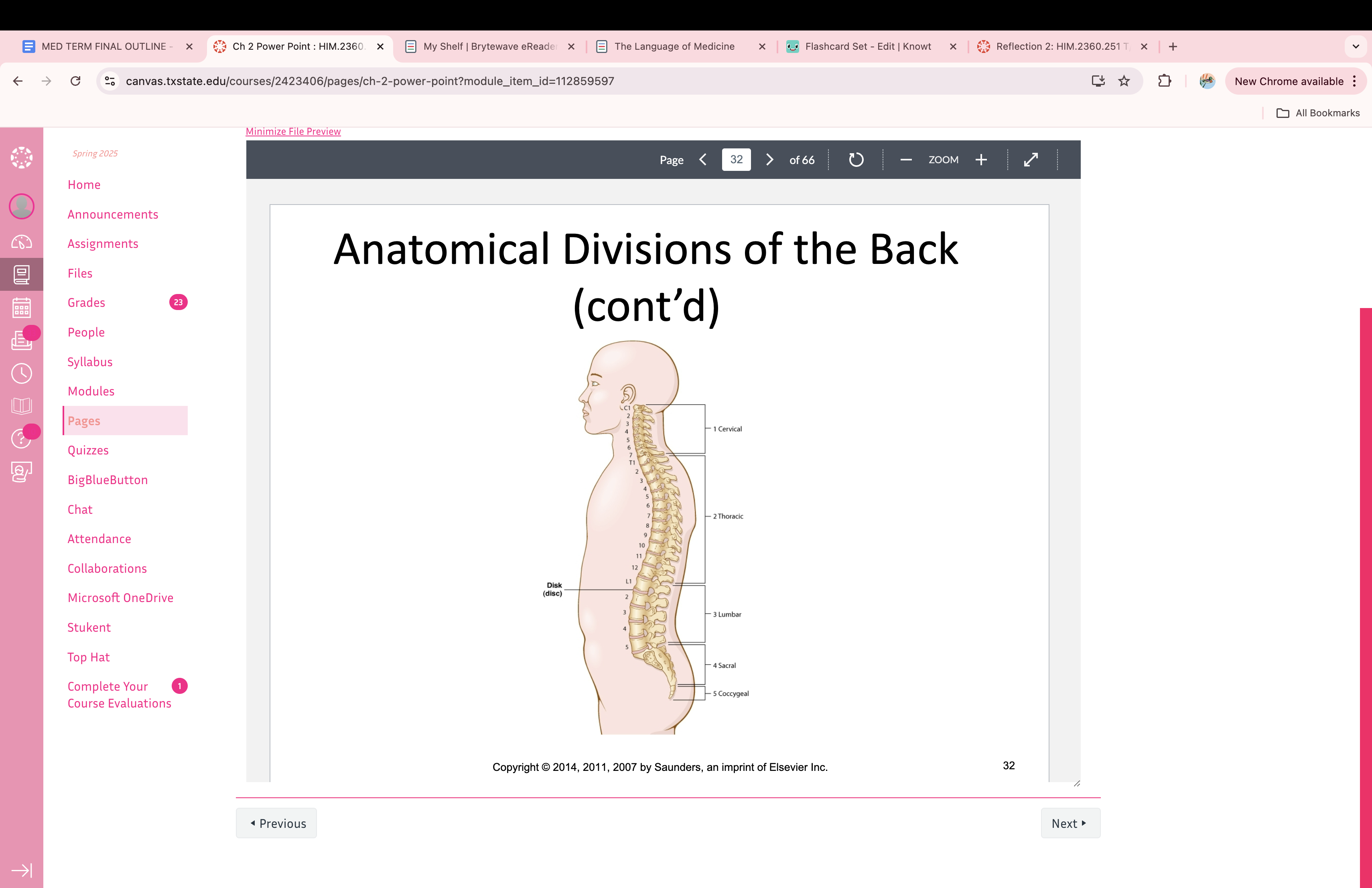MEDICAL TERMINOLOGY TEST 1 BENITEZ TXST
1/346
Earn XP
Description and Tags
for the first test, and to study for the final. pulled from slideshow and textbook
Name | Mastery | Learn | Test | Matching | Spaced |
|---|
No study sessions yet.
347 Terms
aden/o
gland
arthr/o
joint
bi/o
life
carcin/o
cancer
cardi/o
heart
cephal/o
head
cerebr/o
cerebrum
cis/o
to cut
crin/o
to secrete
cyst/o
urinary tract
cyt/o
cell
derm/o or dermat/o
skin
electr/o
electricty
encephall/o
brain
entr/o
intestines
erythr/o
red
gastr/o
stomach
glyc/o
sugar
gnos/o
knowledge
gynec/o
women
hemat/o
blood
hepat/o
liver
iatr/o
treatment, physician
leuk/o
white
log/o
study of
nephr/o
kidney
neur/o
nerve
onc/o
tumor
ophthalm/o
eye
oste/o
bone
path/o
diesease
ped/o
childe
pysch/o
mind
radi/o
x ray
ren/o
kidney
rhin/o
nose
sarc/o
flesh
sect/o
to cut
ur/o
urinary tract, urine
-ac
pertaining to
-al
pertaining to
-algia
pain
-cyte
cell
-ectomy
excision, removal
-emia
blood condition
-genetic
produced by or in
-globin
protein
-gram
record
-ic
pertaining to
-ical
pertaining to
-ion
process
-ist
speacialist
-istis
inflamtion
-logy
study of
-oma
tumor
-opsy
process of viewing
-osis
condition, usually abnormal
-pathy
disease condition
-scope
instrument to visually examine
-scopy
process of visually examining
-sis
state of; conditon
-tomy
new opeing
-y
process, condition
a- or an-
no, not without
dia-
complete, through
aut-, auto-
self
endo-
within
epi-
above, upon
ex-, exo-
out, outside of
hyper-
excessive, above
hypo-
deficient, below
in-
into, in
peri-
surrounding, around
pro-
before, forward
re-
back, backward, again
retro-
behind
sub-
below, under
trans-
across, through


anatomical divisions of the back
-cervical
-thoracic
-lumbar
-sacral
-coccygeal

cells
the fundamental unit of all living things
cranial
(body cavity and organs)
brain
thoracic
(body cavity and organs)
lungs, heart, esophagus, trachea, bronchial tubes, thymus gland, aorta (the part of the body cavity that is between the diaphragm)
abdominal
(body cavity and organs)
stomach, small and large intestines, spleen, pancreas, liver, gall bladder
pelvic
(body cavity and organs)
portions of the small and large intestine, bladder, rectum, ureta, uters, uterus, vagina,
spinal
(body cavity and organs)
nerves of the spinal cord
anterior (ventral)
the front surface of the body, including structures such as the chest and abdomen.
posterior (dorsal)
the back surface of the body, including structures such as the spine and shoulder blades.
deep
pertaining to structures located further away from the surface of the body, often in contrast to superficial.
superficial
the surface level of the body, indicating structures closer to the skin and away from deeper tissues.
proximal
located closer to the point of attachment or origin, especially in relation to limbs.
distal
pertaining to structures located farther from the point of reference or attachment, often in contrast to proximal.
inferior
referring to a position that is lower or below another structure in the body, typically in relation to anatomical landmarks.
superior
referring to a position that is higher or above another structure in the body, often used in anatomical contexts.
medial
pertaining to structures located closer to the midline of the body, often in contrast to lateral.
lateral
referring to a position that is farther from the midline of the body, often in contrast to medial.
supine
lying on the back, face upward.
prone
lying flat on the stomach, face downward.
adipose tissue
collection of fat cells